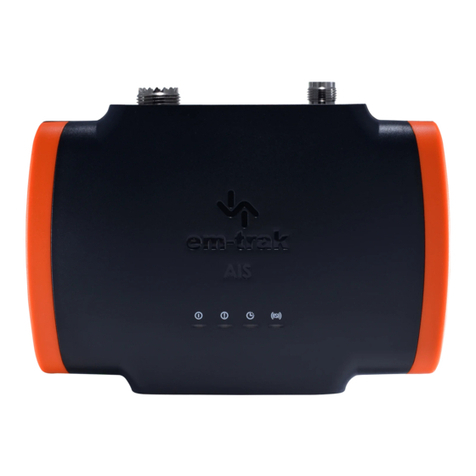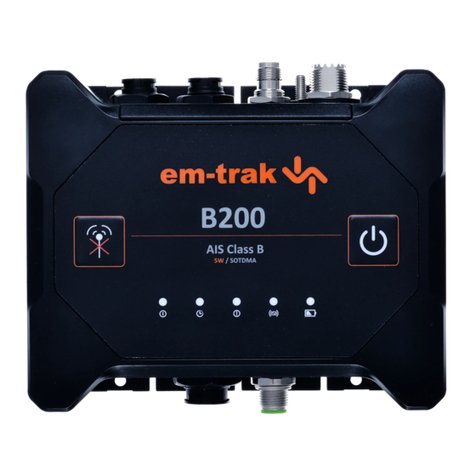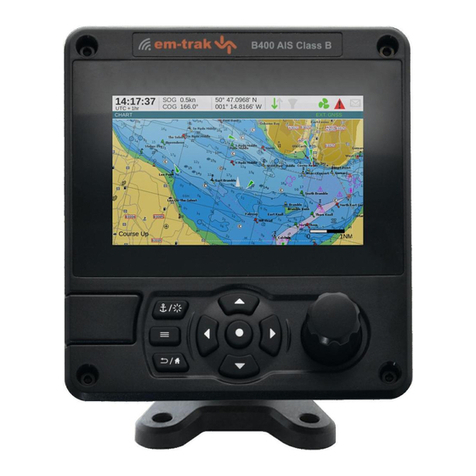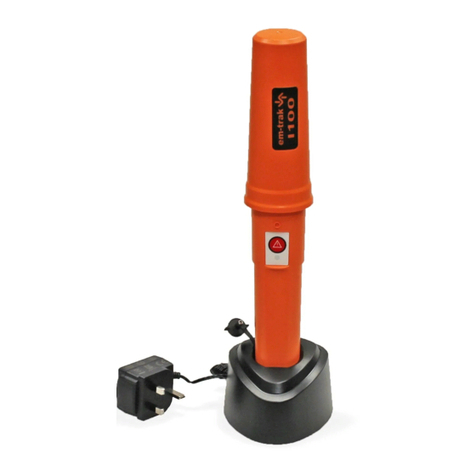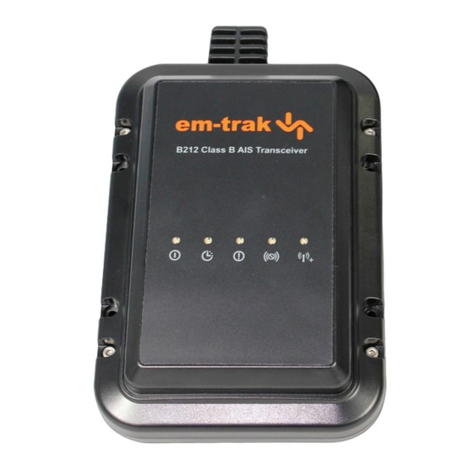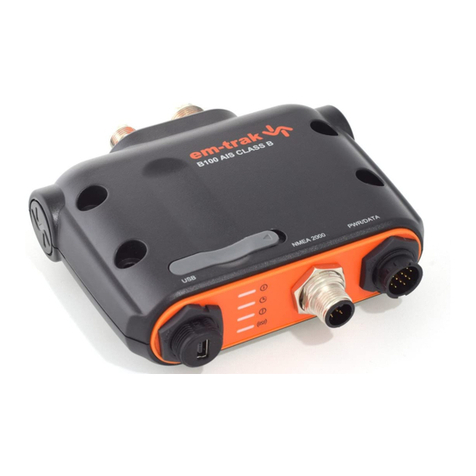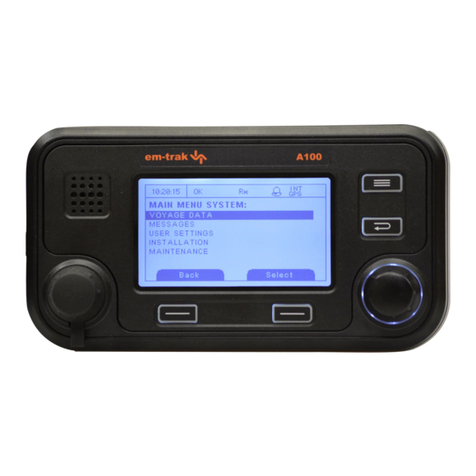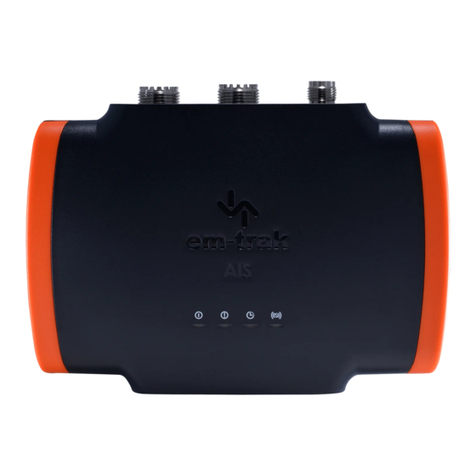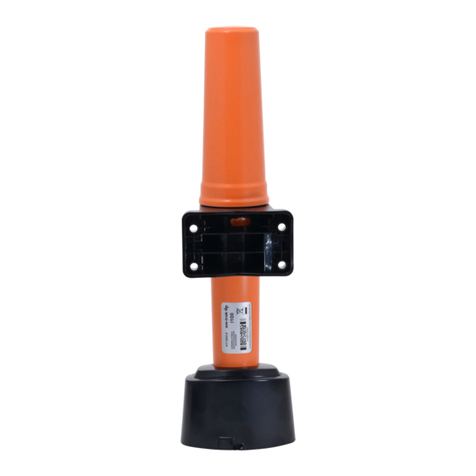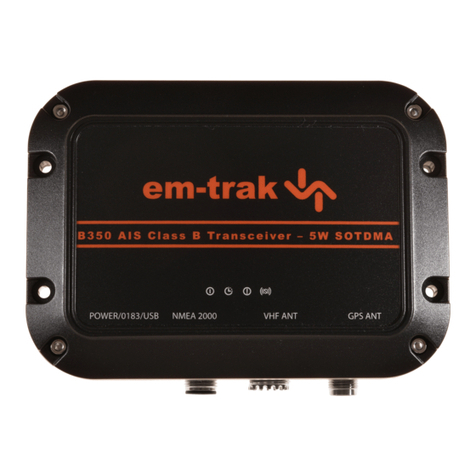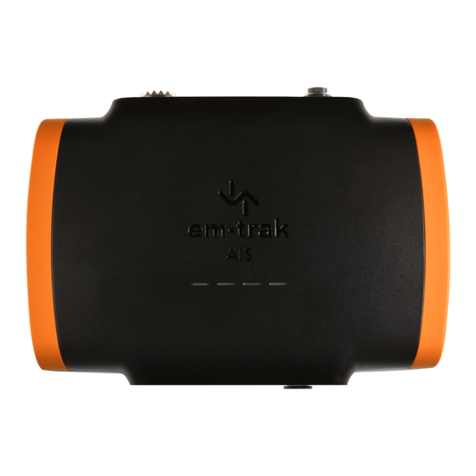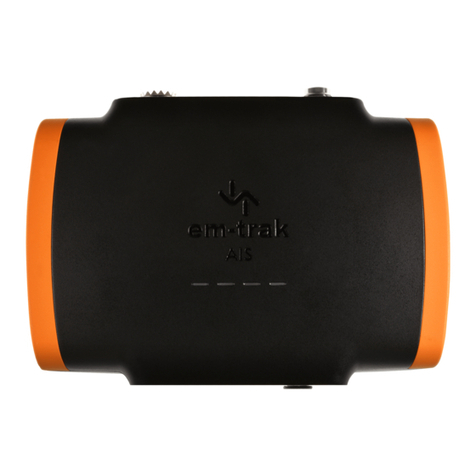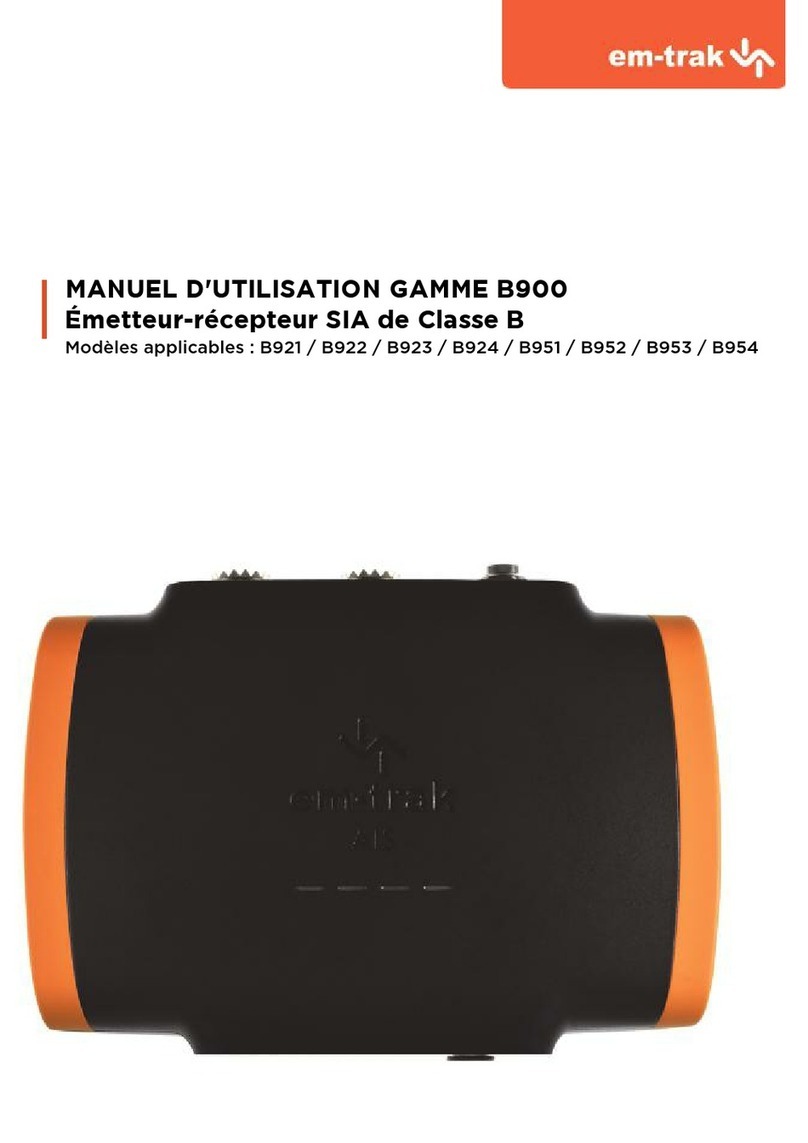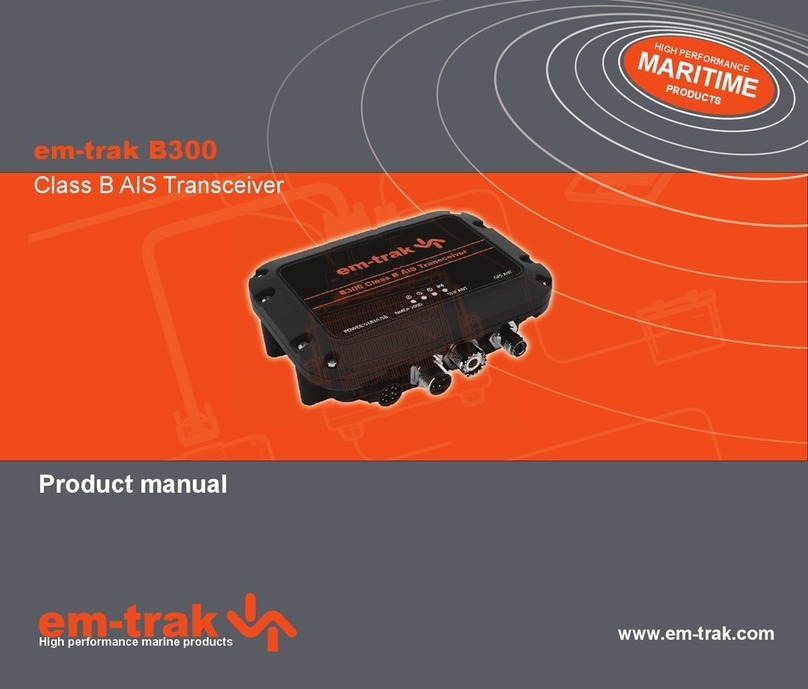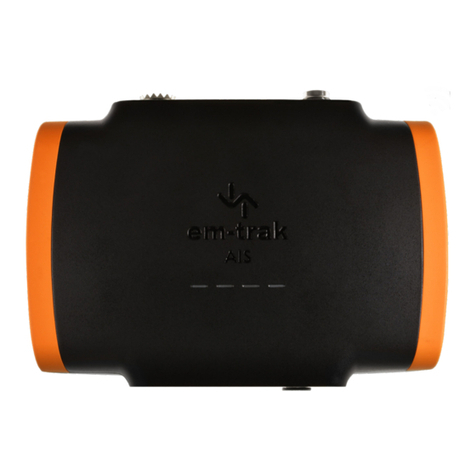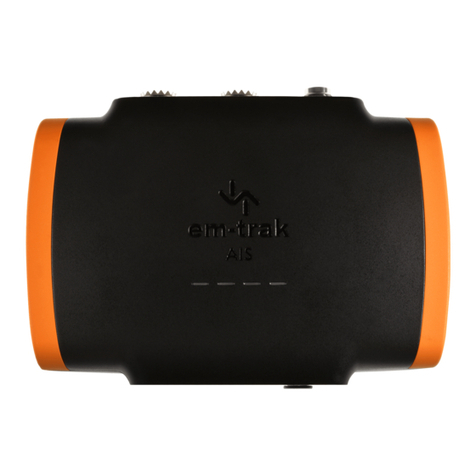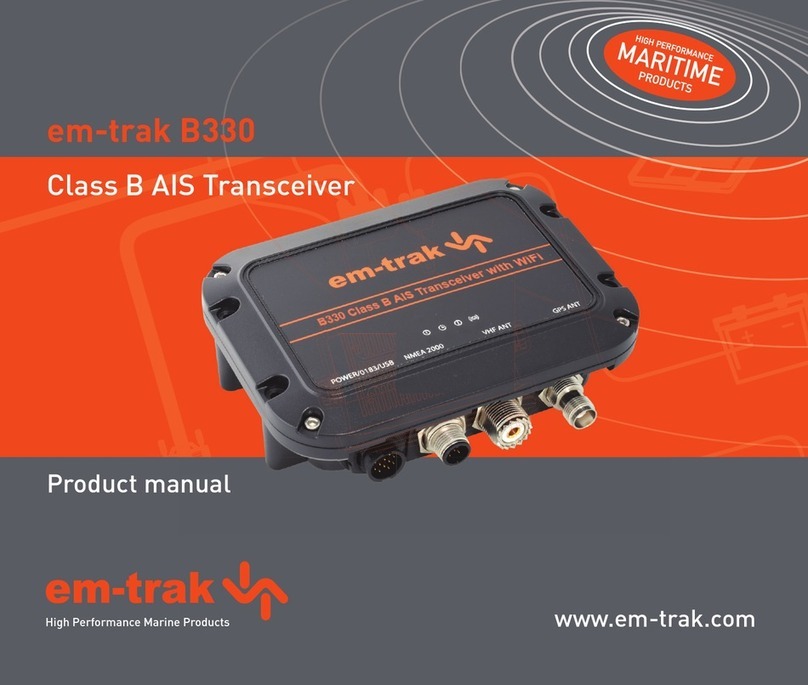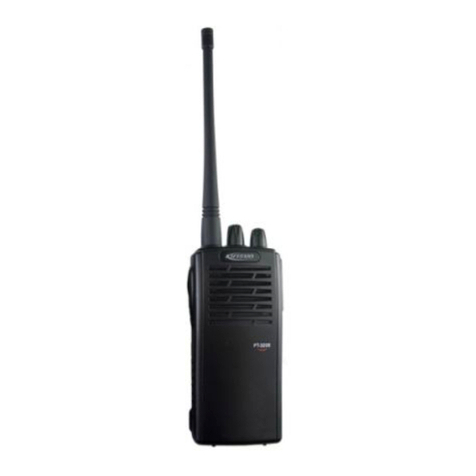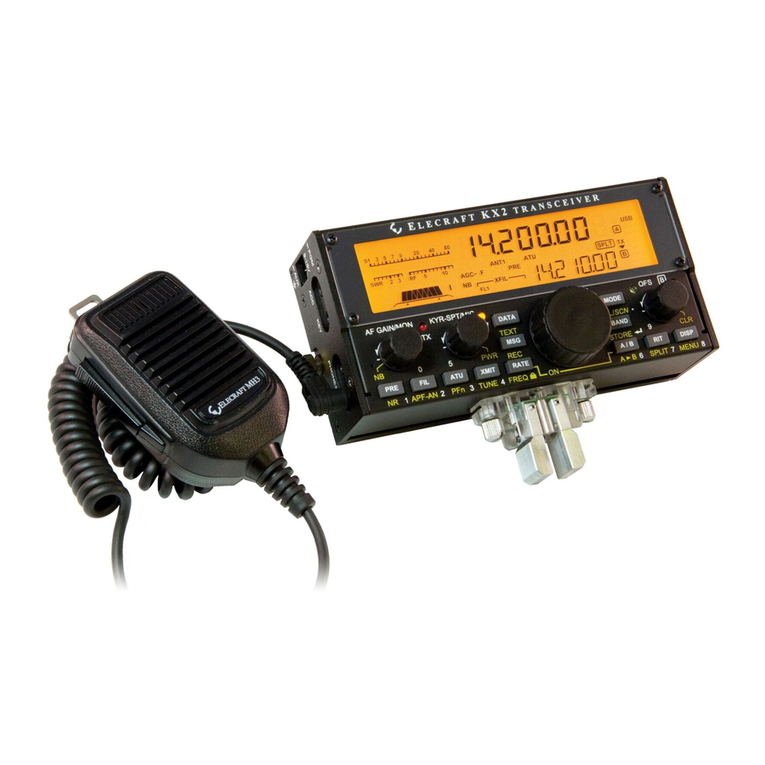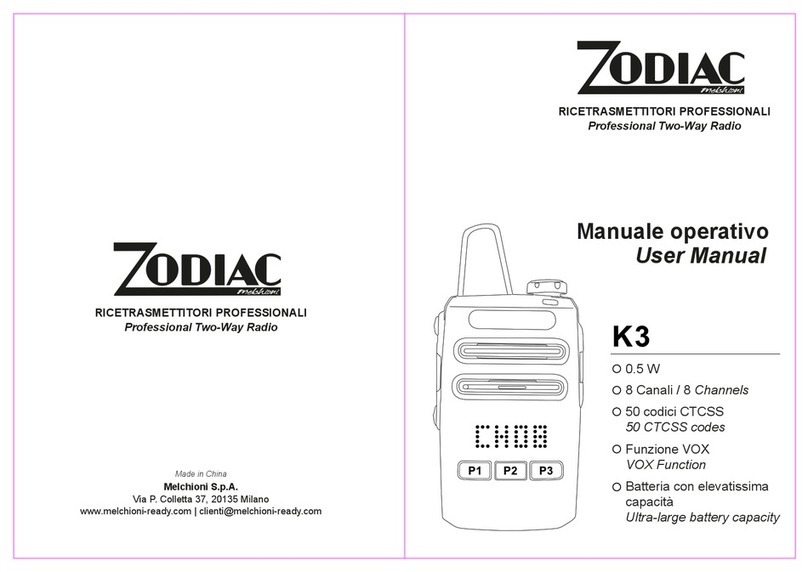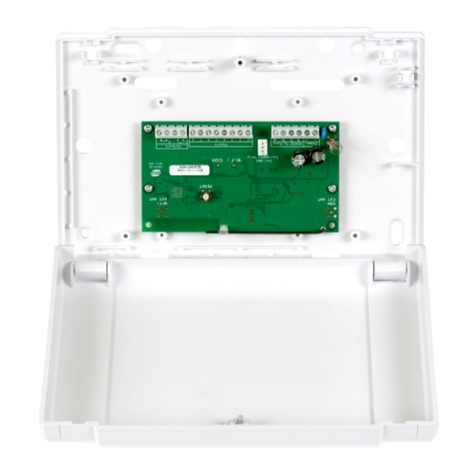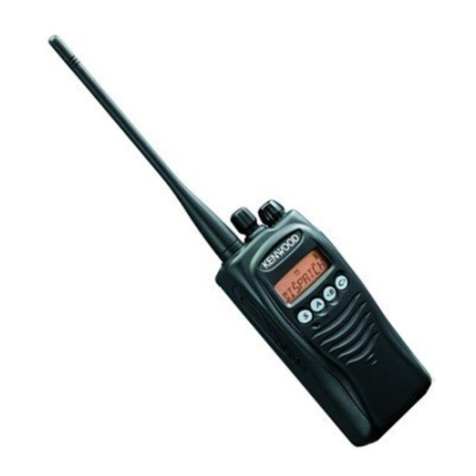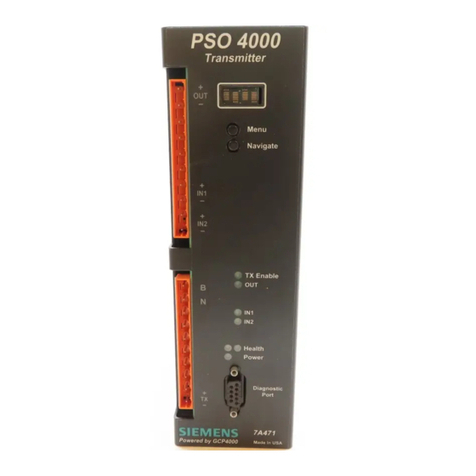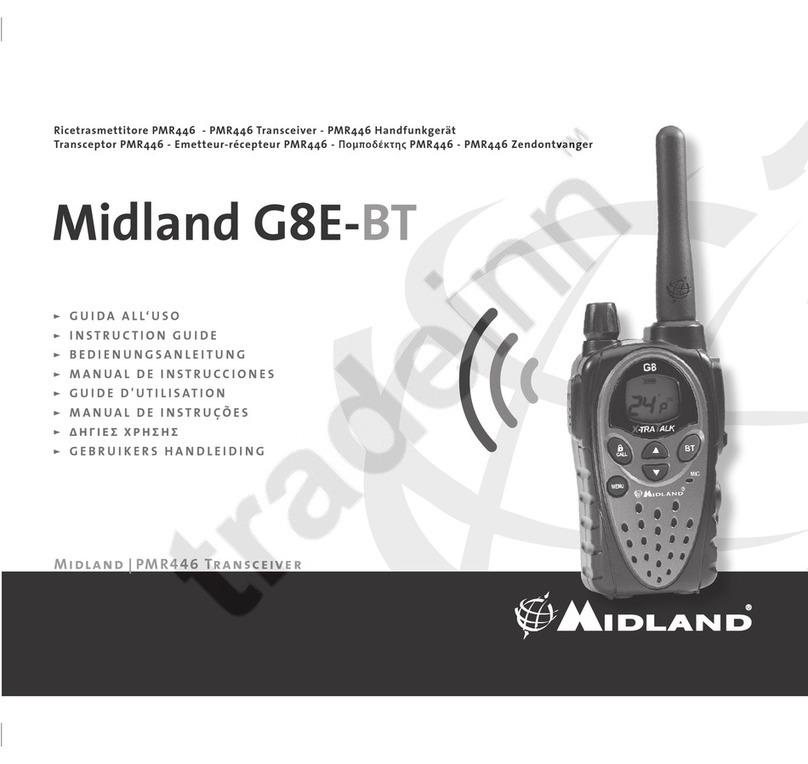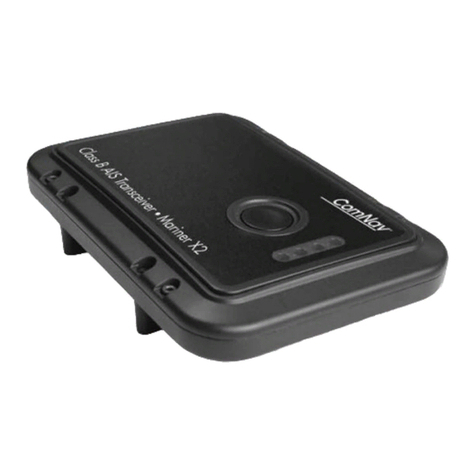HOW DO I PROGRAM THE B100?
Before your AIS unit can be used, it must first be configured with your vessel details. This information includes
the Vessel name, MMSI number, Call Sign, Vessel Type and Dimensions)
The method available to you to set your unit up will depend on where you live. If you are installing the unit in
the USA, then the FCC has stated that only approved Marine Installers are permitted to configure AIS devices.
The good news is that we appreciate that not everyone is an accredited installer, so we offer a free SD card
configuration service that allows US users to apply for an SD card with their configuration files on. Simply fill in
the online form, found at http://em-trak.com/class-b-registration, and we’ll send you a card within 5 working
days. Alternatively, you can ask your local installer to set the configuration of your B100, using the ProAIS2
software that comes with the CD in the box.
If you are installing your B100 outside of the US, then you are permitted to configure your AIS transceiver
yourself. You can do this by connecting your B100 to a PC/Laptop via the USB connection and running the
ProAIS2 software that is included on the CD that comes with your B100. Simply connect to the software, fill in
the blanks and click “write configuration” and you’re done! A word of warning though. Once the MMSI number
is entered and written to a unit, it cannot be changed by the end user and must be sent back to the supplier to
be reset, so be careful not to make any mistakes when entering your vessel data.
WILL MY CHARTPLOTTER DISPLAY AIS IF I CONNECT IT TO MY B100?
This very much depends on the features on your Chartplotter. Most modern Chartplotters made in recent
years should be AIS compatible. Provided your Chartplotter/external display has NMEA0183/NMEA2000
connectivity and also the ability to interpret AIS VDM messages (VDM messages are received from other
vessels AIS devices), then it should be able to display other vessels AIS information.
If in doubt about compatibility then please contact the em-trak support team for advice.
WHAT IS THE RANGE OF THE B100?
There are many factors that will affect the range of the B100, not all of which are within the control of any
installer. Things like atmospheric conditions and local geography, sea conditions etc. can all have an impact
on the range of any radio based technology.
In addition to these factors, thinks like choice of antenna and height/ location of installed antennas can also
adversely affect the range of any device. Also, the strength and quality of an inbound signal will also mean
that range from other vessels will be hard to reliably predict. To better your chances as getting the best range
performance, the user manual for the B100 lists all things that need to be taken into consideration as part of
the installation process. Assuming though, that a correctly setup B100 is connected to a suitable, well serviced
and correctly installed antenna, in ideal line of site conditions, users can expect ranges of at least 15-20 miles,
if not much more.
